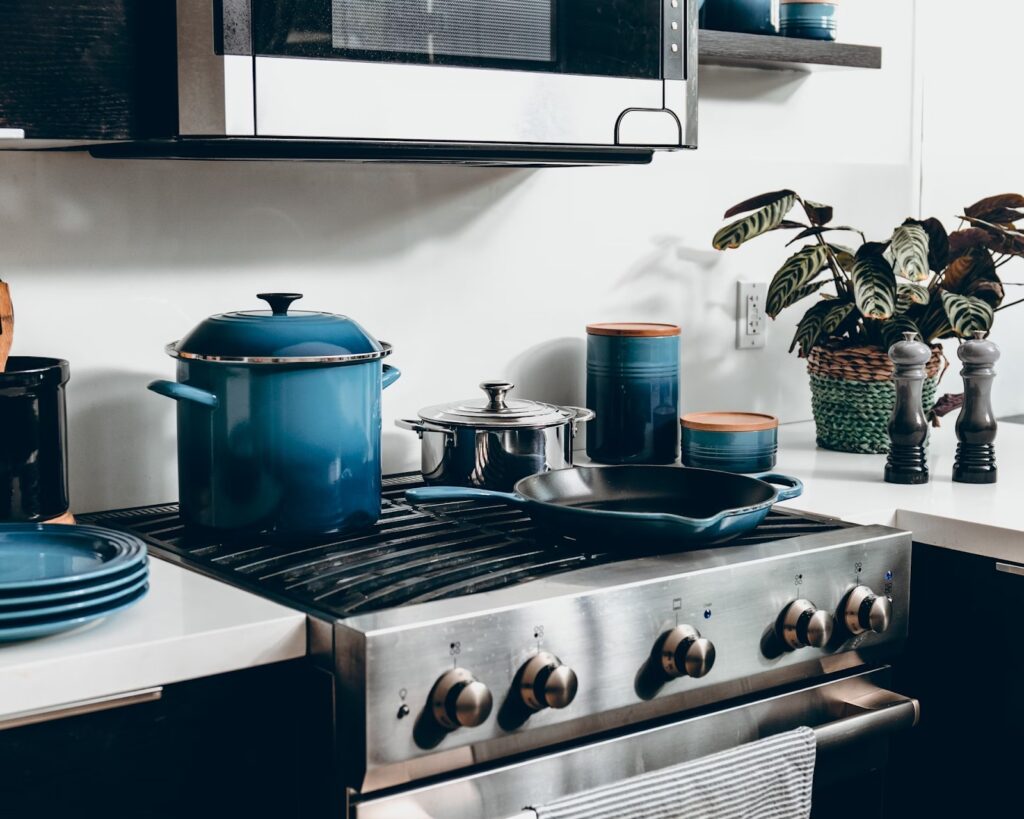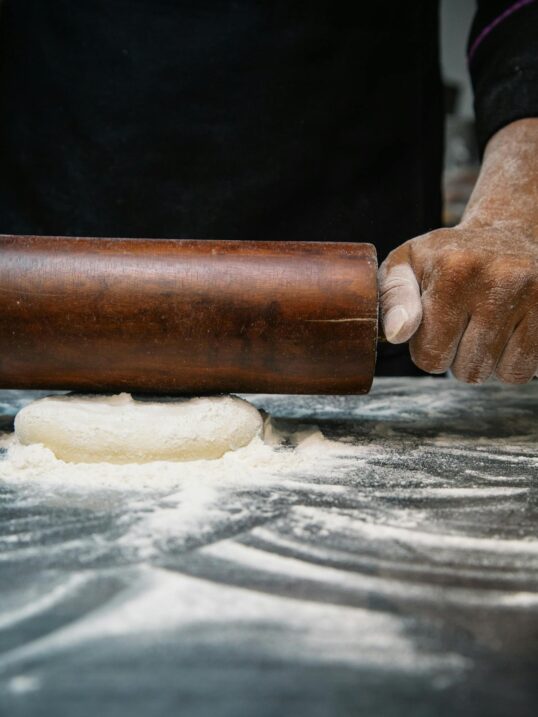Often used interchangeably, slow cookers and Crockpots are kitchen staples known for their convenience. Whether you make comfort foods like baked beans, beef stews, or even desserts – these appliances can be a lifesaver!
Although they use a similar method to cook food and yield equally delicious results, they aren’t the same.
This guide covers the similarities and differences between slow cookers and Crockpots in terms of features, sizes, prices, and performance to help you make an informed purchase decision.
What’s the Difference between a Slow Cooker and a Crock Pot?
Before we go deeper, note that a Crockpot is a type of slow cooker. However, not every slow cooker can be called a Crockpot.
Crockpot is a brand of slow cooker. The company popularized its product as a slow cooker when it was launched in the 1970s. It was originally introduced as a “bean cooker.”
Over time, it was redesigned and turned into the model we see today. Even though there are many slow cooker brands out there, like KitchenAid and Black+Decker, Crockpot stands to be the most popular of all.
To be more specific, Crockpots, a product by Rival Manufacturing Company, went through a genericization process. It happens when a product becomes so popular that it becomes synonymous with the entire category. Think Kleenex and tissue, Thermos and vacuum jar, Band-Aid, and bandage.
So, a Crockpot has been genericized to mean the same thing as a slow cooker.
Here is a breakdown of slow cookers vs Crockpots for a better perspective:
Features
The features and design of Crockpots and other slow cookers differ, affecting how the food cooks.
Crockpots have a ceramic or porcelain pot that stays inside the heating unit, with heat coming from the bottom and sides. They come in round or oval shapes. Also, most Crockpots have only two heat settings – low and high wattage. Some may have a third setting of low-watt warming option, but it isn’t very common.
On the other hand, some slow cookers have a metal pot (sometimes removable) that sits atop the heating unit and is heated only from the bottom. This focused heat increases the risk of scorching, so food needs more stirring, and the lid may need to be opened more often to release steam. However, the five options in the heating range make it convenient to manage.
Price
Crockpots may have slightly higher prices than slow cookers because of the brand image and unique features. This table illustrates how each size and model quality differs in price:
| Slow Cookers | Crockpots | |
| Budget Models | $20 – $40 | $20 – $50 |
| Mid-Range Models | $40 – $80 | $50 – $100 |
| High-End Models | $80 – $200 | $100 – $200 (or more) |
The basic models feature smaller capacities with a few fundamental features. Meanwhile, the mid-range models have a higher capacity of around 4-6 quarts, and they tag along with additional features such as multiple heat settings.
Lastly, if you invest in a high-end slow cooker or Crockpot model, you can enjoy advanced features like touch controls and multi-cooking options.
The choice between a slow cooker and a Crockpot comes down to your budget, cooking style, and the features you want. Don’t forget to check customer reviews and warranties to make sure you get the best bang for your buck!
Cooking Performance
Slow cookers and Crockpots may look alike—with their pots, lids, and heating elements.
Plus, they both use moist heat to cook food slowly over time. But how does one differ from the other in terms of cooking performance?
As mentioned earlier, most slow cookers have a heating element on the bottom. This can cause some dishes to burn or stick if you don’t stir them. These bottom-heated slow cookers can work in cycles, powering on and off during cooking.
If you plan to cook while you are away or overnight, a Crockpot might be the better option. While powered on, Crock-Pots cook continuously, and some models come with a timer for specific cooking durations.
They distribute heat more evenly and don’t require stirring. Also, they cook larger cuts of meat more thoroughly, making them incredibly tender.
Similarities between a Slow Cooker and a Crock Pot
As we now know, all Crockpots are slow cookers, so, understandably, the cooking method is the same. They use moist heat to cook food while using less energy than other appliances.
These products are designed for a busy lifestyle, enabling you to prepare meals in advance. Many models have features like automatic shut-off or cool-touch exteriors to ensure safe operation.
Moreover, the size ranges of both are largely the same, as they are available in 1 – 10 quarts (4 cups in each quart). While they can hold the amount specified, it is recommended not to fill them to the top. For optimal cooking, the pot should be filled between half and three-quarters full.
Check out a quick roundup of how you can use each size:
| Size | Uses |
| 1 to 2 Quarts | Small dishes like dips, appetizers, or meals for one or two people. |
| 3 to 4 Quarts | For a side dish like casseroles or stews for a small family. |
| 5 to 6 Quarts | Perfect for soups, stews, and roasts cooked for a family meal. |
| 7 to 8 Quarts | Handles big cuts of meat and large food batches for large families or gatherings. |
| 10 Quarts or More | Best for cooking large quantities for big events. |
Even though there are differences in design and functionality, slow cookers and Crockpots share many similarities that make them valuable kitchen tools.
How to Use a Slow Cooker and Crock Pot
Using a slow cooker or a Crockpot is quite simple! easy. We suggest you read the manual or watch the official video from the manufacturer for precise instructions.
However, below, we have listed the general steps to follow:
Preparation and Placement
First, pick a recipe that works well for slow cooking—soups, stews, casseroles, or roasts are perfect. Then, wash, chop, and measure your ingredients to keep things easy. Place heavier items like root veggies or meat at the bottom of the pot, and layer lighter ones, like leafy greens, on top for even cooking.
Set the Flavors and Cooker
Once your ingredients are in the pot, add 1 to 1.5 cups of liquid, such as broth, water, or sauce, to keep things juicy. Sprinkle in your favorite herbs and spices for a boost of flavor. Choose the cooking temperature—”Low” or “High,” as the recipe suggests. Now, secure the lid to lock in the heat and moisture, and resist the urge to lift it while cooking to ensure everything cooks smoothly.
Check and Serve
Once your slow cooker or Crock-Pot is set, let it work its magic while you monitor the cooking time based on your recipe. When the time is up, check if the food is done to your liking. If needed, cook it for an extra 30 minutes to an hour. When ready, carefully remove the lid (watch out for the steam!) and enjoy serving your meal straight from the pot.
These are steps to follow when using either a slow cooker or a Crockpot. Ensure you don’t overfill the containers and use fresh ingredients to make the food delicious.
How to Determine Which to Use
If you want hassle-free cooking, a Crock-Pot is a great choice. It distributes heat evenly, so you can leave it unattended for long periods—perfect for overnight meals or busy days.
On the flip side, if you love trying out different cooking techniques and don’t mind stirring now and then, a slow cooker offers more versatility. You can experiment with various recipes and adjust cooking times, which is ideal if you prefer to check on your meal as it cooks.
Insider’s Insight
The debate of a slow cooker vs. Crockpot concludes that each has distinguished features. Given how Crockpot belongs to the family of slow cookers, it shares many similarities but has some unique perks.
This is why it has premium prices compared to the rest of the family.
In contrast, slow cookers offer more features and diverse food options.
At the end of the day, choosing between a slow cooker and a Crock-Pot comes down to your cooking style and the types of meals you enjoy making. With the right recipe and patience, both can deliver mouthwatering results that might surprise you.
Let these appliances do the hard work, and who knows? You could become the next culinary star among your friends/family!




Leave a Reply